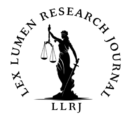Written By Shreya Pathoi
Intern- Lex lumen Research Journal,
January 2025
INTRODUCTION
Environmental justice refers to the fair treatment and meaningful involvement of all people, regardless of race, color, national origin, or income, concerning developing, implementing, and enforcing environmental laws, regulations, and policies that all individuals and communities have equal access to environmental benefits and protection from environmental harm. The disproportionate burden of environmental hazards and pollution often falls on marginalized and vulnerable communities. Environmental justice, a principle advocating for the fair treatment of all people regardless of race, nationality, or income concerning environmental laws, policies, and practices, remains a critical yet challenging goal. Vulnerable communities, often bearing the brunt of environmental degradation, face numerous challenges that undermine the enforceability of ecological justice. This blog delves into these challenges and explores the concerns surrounding the protection of these communities.
Environmental justice is based on the principle that no group should bear a disproportionate share of environmental harms and risks. Vulnerable communities, often characterized by poverty, inadequate infrastructure, and limited political representation, are frequent victims of ecological hazards such as air and water pollution, industrial waste, and climate-induced disasters.
THE VULNERABLE COMMUNITIES AND THEIR RIGHTS RELATED TO ENVIRONMENT
The vulnerable communities enjoy certain rights. Many Legislative provisions have been set up to preserve the rights of the tribals. The Wildlife Protection Act, 1972 Prohibits hunting of certain wild animals[1], however, this provision does not apply to the Scheduled Tribes [2].
The Act also prohibits the picking uprooting etc of Specified Plants[3] but this too does not apply to the Scheduled Tribes.
The Forest Right Act also provides rights to the Forest Dwelling Scheduled Tribes (FDST) and the Other Traditional Forest Dwellers (OTFD) and mentions the rights in different sections[4]. Some of the Rights are
- Right to convert forest villages into Revenue Villages.
- Right to Protect and use Community Forest Resources.
- Right to use grazing areas and water bodies.
- Provisions which are specially designed for nomadic tribes.
- Right to protect land except for selling and transferring the land.
As in the case of M.K. Ranjeet Sinh and Ors. v. Union of India and Ors (2024).[5], the Supreme Court stated that the right to be free from adverse effects of climate change is a fundamental right under Articles 14 and 21. The court also highlighted the disproportionate effect of climate change on vulnerable communities
SUSTAINABLE DEVELOPMENT AND VULNERABLE COMMUNITIES
Indian Government has taken certain measures to implement the Sustainable Development Goals in concern with Vulnerable Communities. Some of them are:
The Indian government has taken significant steps to achieve Sustainable Development Goal 4 (quality education) by launching initiatives such as the Eklavya Model Residential Schools (EMRS) in 1997-1998, which provides quality education and residential facilities to tribal communities. Currently, there are approximately 690 EMRS schools across India, offering financial assistance to Scheduled Tribe (ST) students through fellowships and scholarships from pre-matric to post-matric levels.[6]
Additionally, the Ministry of Tribal Affairs has approved the Pradhan Mantri Vanbandhu Kalyan Yojana (PMVKY) for implementation from 2021-2022 to 2025-2026, with a total budget of Rs. 26,135.46 crores. The scheme aims to provide quality education, improve the quality of life, and promote holistic development in tribal areas by bridging the infrastructure gap and focusing on quality.[7]
KEY CHALLENGES IN ENFORCING ENVIRONMENTAL JUSTICE IN INDIA
- Lack of effective legal framework
Various legal frameworks highlight that inadequate access to justice is a significant issue. Article 39A of the Constitution emphasizes the importance of providing free legal aid and ensuring everyone has access to justice. Additionally, the National Green Tribunal was established to facilitate the effective resolution of environmental disputes through the National Green Tribunal (NGT).
However, several challenges hinder marginalized communities from obtaining justice. High litigation costs and a lack of awareness about legal rights often prevent these groups from seeking redress. Furthermore, the NGT’s limited outreach makes it difficult for rural and tribal populations to access its services. Additionally, the complexities of legal procedures can deter individuals from effectively utilizing the remedies that are available to them.
- Weak Implementation of Environmental Laws
Inadequate access to justice is a significant issue, as highlighted by various legal frameworks. The Constitution emphasizes the importance of providing free legal aid and ensuring that everyone has access to justice[8]. Additionally, the National Green Tribunal[9] was established to facilitate the effective resolution of environmental disputes regarding environment protection.
However, several challenges hinder marginalized communities from obtaining justice. High litigation costs and a lack of awareness about legal rights often prevent these groups from seeking redress. Furthermore, the limited outreach of the NGT makes it difficult for rural and tribal populations to access its services. Additionally, the complexities of legal b can deter individuals from effectively utilizing the remedies that are available to them.
- Dilution of environmental safeguards
The dilution of environmental safeguards presents a serious risk to environmental justice. The Draft EIA Notification of 2020 suggested diminishing public participation and expediting clearances for industrial projects, which raised alarms about the potential adverse effects on vulnerable communities that depend on natural resources.
In the case of Goa Foundation v. Union of India (2014)[10], the Supreme Court took a significant stance by suspending mining activities in Goa to avert environmental degradation. This ruling underscored the necessity for robust regulations and the active involvement of the public in decision-making processes related to environmental issues.
- Development v. Environmental Justice
Rapid industrialization and urbanization often clash with environmental justice, having a disproportionate impact on vulnerable communities. This conflict can lead to significant socio-economic hardships for those affected. For instance, the construction of large dams has been a major source of contention, as it can result in the displacement of thousands of people, particularly from tribal communities.
A notable example of this is the Sardar Sarovar Dam, which displaced thousands of tribal families. The case of Narmada Bachao Andolan v. Union of India (2000)[11] highlights the complexities of this issue. Although the Supreme Court allowed the dam’s construction, it emphasized the need for adequate rehabilitation measures for the affected families. However, many of these families reported receiving inadequate or delayed compensation, underscoring the challenges of balancing development with environmental justice and the rights of vulnerable communities.
- Climate changes and Vulnerabilities
Climate change has a disproportionate impact on marginalized communities, exacerbating existing inequalities. The effects of climate change are far-reaching, with rising sea levels posing a significant threat to coastal communities and erratic rainfall patterns affecting subsistence farmers who rely heavily on predictable weather conditions. These communities are often the most vulnerable to the impacts of climate change, with limited resources and infrastructure to adapt to the changing environment.
In India, the National Action Plan on Climate Change (NAPCC) has been implemented to address the issue of climate change. The plan includes missions for sustainable agriculture and renewable energy, which aim to reduce the country’s carbon footprint and promote sustainable development. However, the effective implementation of these missions is hindered by limited financial support and localized adaptation measures. Despite the existence of a legal framework, more needs to be done to provide adequate resources and support to marginalized communities, enabling them to adapt to the impacts of climate change and build a more sustainable future.
Recommendation for strengthening the enforceability of environmental justice
- strengthening legal framework
Amend existing laws like the Environment (Protection) Act, 1986[12], and Water Act, 1974[13], and The Air Act, 1981[14], to include stricter penalties for violations and greater accountability for polluting industries and to increase the power of the CPCB and SPCBs.
Provide the NGT with more resources and judicial powers to expedite environmental cases, especially in remote and underserved regions.
- Capacity building for vulnerable communities
Workshops and campaigns should be conducted to educate and inform vulnerable communities, especially tribals, about their rights and grievance redress mechanisms.
Apart from this Technical Training should be provided to the communities to monitor pollution levels and environmental violence.
- Enhancing community participation
Decentralized environmental governance structures should be established at the panchayat and municipal levels to involve localised decision-making.
As emphasized in the Vedanta Resources Plc v. Union of India (2013) case, the mandate of free, prior, and informed consent (FPIC) should be established for projects affecting tribal or forest-dependent communities.
- Promoting Sustainable Development Approaches
Industries and Urban planners should be encouraged to use green infrastructural practices like urban gardens to minimize environmental degradation.
Ecotourism and agroforestry should be promoted for balanced growth and sustainable livelihood.
- Strengthen Judicial Intervention
Fast Track Courts should be established so that cost-effective as well as speedy justice can be provided in environment-related cases for better environmental conditions.
Industries should be inspected regularly to properly monitor their adoption of environment-protecting methods.
CONCLUSION
It remains a challenge due to systematic inefficiencies, socio-economic disparities, and governance issues in implementing India’s law. This, on the other hand, calls for cooperation among the government, judiciary, civil, society, and communities to strengthen environmental justice efforts. India should prioritize inclusiveness, transparency, and sustainability and take steps in the direction so that the more vulnerable sections can achieve environmental justice.
REFERENCES
- Sarisha Harita and Vijaya Nidhi, From Margins to Progress: Unleashing the Potential of India’s Tribal Communities for Sustainable Development, 4.3 JCLJ, 131,136-139, (2024).
- Narmada Bachao Andolan v. UOI, 10 SCC 664.
- Goa Foundation v. UOI, (2014) 6 SCC 590.
- K. Ranjeet Sinh and Ors. v. Union of India and Ors (2024), Writ Petition (C) No. 838
- The Wildlife Protection Act, 1972, § 9, No. 53, Acts of Parliament, 1972, (India).
- The Scheduled Tribes and Other Traditional Forest Dwellers Act, 2006 No. 2, Acts of Parliament, 2006 (India).
- The Environment Protection Act, 1986, No. 29, Act of Parliament, 1986 (India).
- The Water (Prevention and Control of Pollution) Act, 1974, No. 6, Acts of Parliament, 1974 (India).
- The Air (Prevention and Control of Pollution) Act, 1981, No. 14, Acts of Parliament, 1981 (India).
- India Const. art. 39A.
- SCC online, scconline.in (15th Jan. 2025).
- iPleaders, https://blog.ipleaders.in/ (14th 2025)
[1] The Wildlife Protection Act,1972, s. I, II, III, IV, No. 53, Acts of Parliament, 1972, (India)
[2] The Wildlife Protection Act, 1972, § 9, No. 53, Acts of Parliament, 1972, (India)
[3] The Wildlife Protection Act, 1972, § 17, No. 53, Acts of Parliament, 1972, (India)
4 The Scheduled Tribes and Other Traditional Forest Dwellers Act, 2006, § 3, No. 2, Acts of Parliament, 2006 (India)
[6]Sarisha Harita and Vijaya Nidhi, From Margins to Progress: Unleashing the Potential of India’s Tribal
Communities for Sustainable Development, 4.3 JCLJ, 131,136-139, (2024)
[7]Sarisha Harita and Vijaya Nidhi, From Margins to Progress: Unleashing the Potential of India’s Tribal
Communities for Sustainable Development, 4.3 JCLJ, 131,136-139, (2024)
[8] India Const. art. 39A
[9] National Green Tribunal Act, 2010, No. 19, Acts of Parliament, 2010 (India)
[10] Goa Foundation v. UOI, (2014) 6 SCC 590
[11] Narmada Bachao Andolan v. UOI, 10 SCC 664
[12]Environment Protection Act, 1986, No. 29, Act of Parliament, 1986 (India)
[13] Water (Prevention and Control of Pollution) Act, 1974, No. 6, Acts of Parliament, 1974 (India)
[14] Air (Prevention and Control of Pollution) Act, 1981, No. 14, Acts of Parliament, 1981 (India)



Great work Keep it up
👍